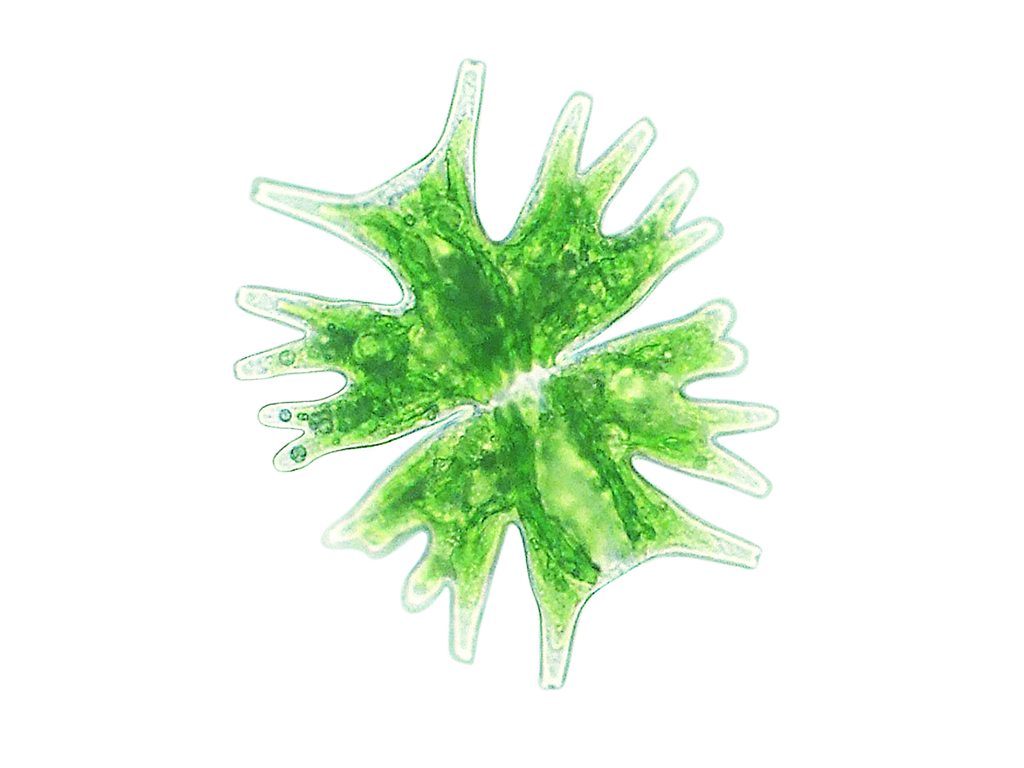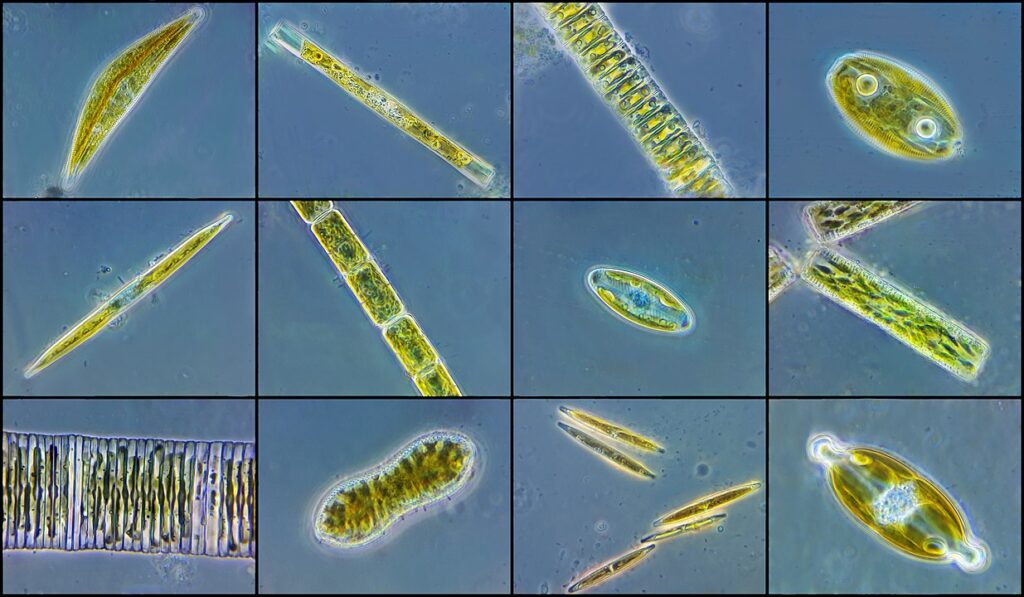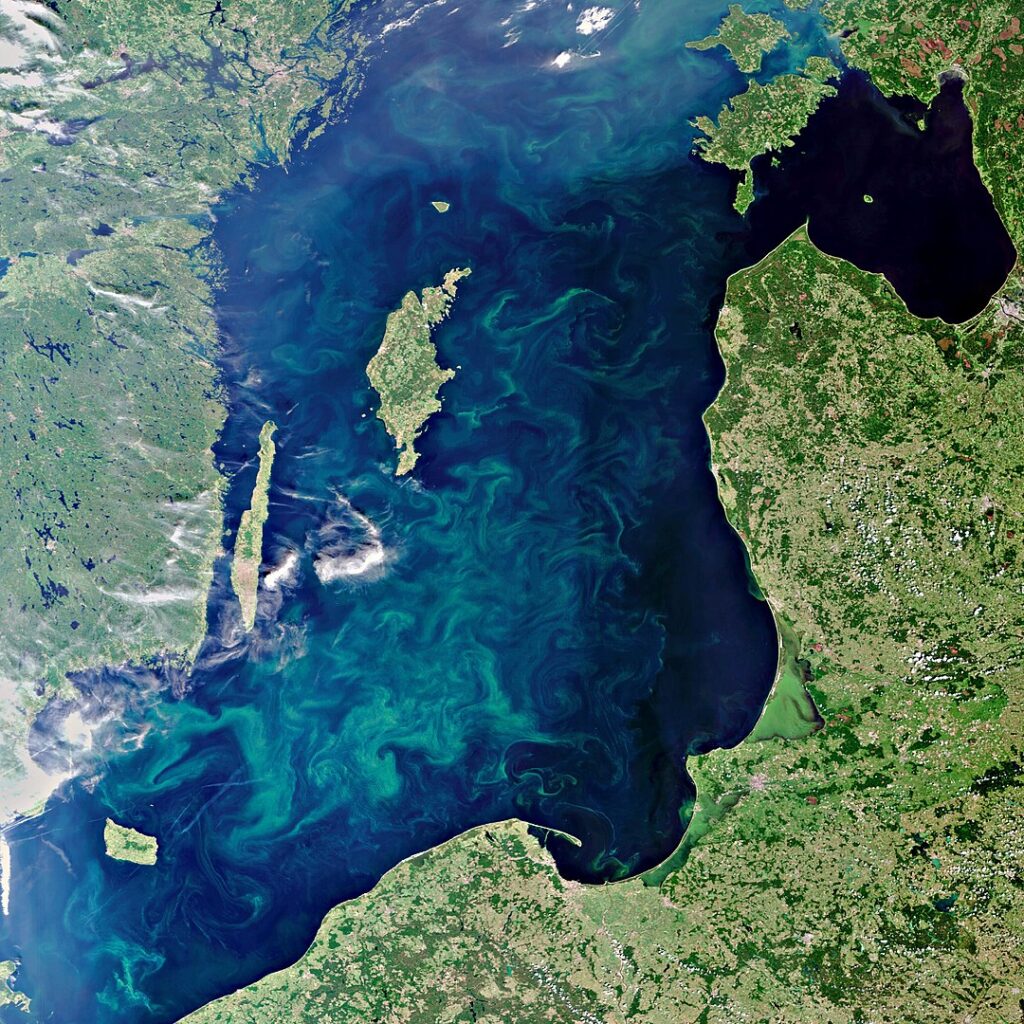Phytoplankton

No phytoplankton – no life!
Phytoplankton are the foundation of all life on Earth. Almost all life in the seas and oceans gets its nourishment from phytoplankton.
Phytoplankton are single-celled small algae that float along in the water with the currents. They get their energy from the sun, through photosynthesis, just like a plant on land. They also absorb nutrients from the water.

Photo: Andrei-Savitsky-CC-BY
Plants and bacteria
Plankton that use photosynthesis are called phytoplankton. There are over 5,000 known species of phytoplankton. These include not only algae like green algae, dinoflagellates, and diatoms but also a group of bacteria known as cyanobacteria. Despite being bacteria, they are sometimes referred to as “blue-green algae”. In this tank, we grow microscopic green algae, which become food for our zooplankton in the tank below.

Photo: Envisat satellite-CC-BY-SA
Oxygen in the air and ozone in the atmosphere
Our ozone layer was created 500 million years ago. The oxygen in the ozone layer was created by cyanobakteria and algae. Because phytoplankton create oxygen, we have oxygen to breathe and an ozone layer that protects us from UV radiation.
Did you know that 73-83 percent of all the oxygen on Earth is produced by cyanobacteria?